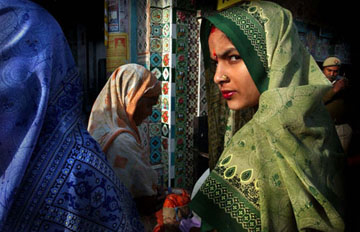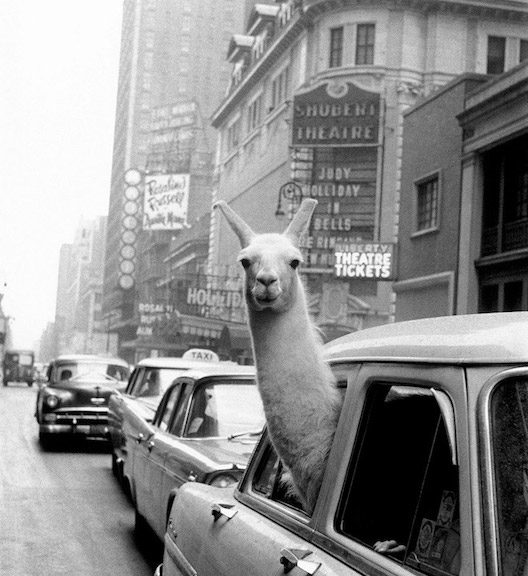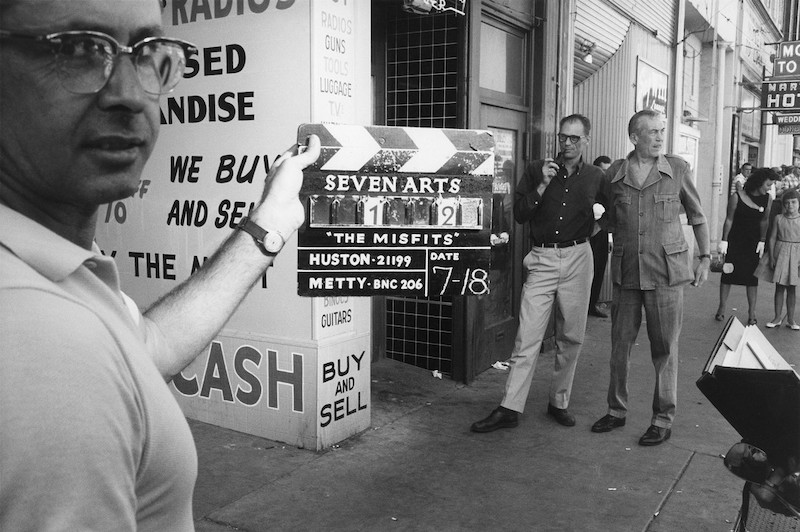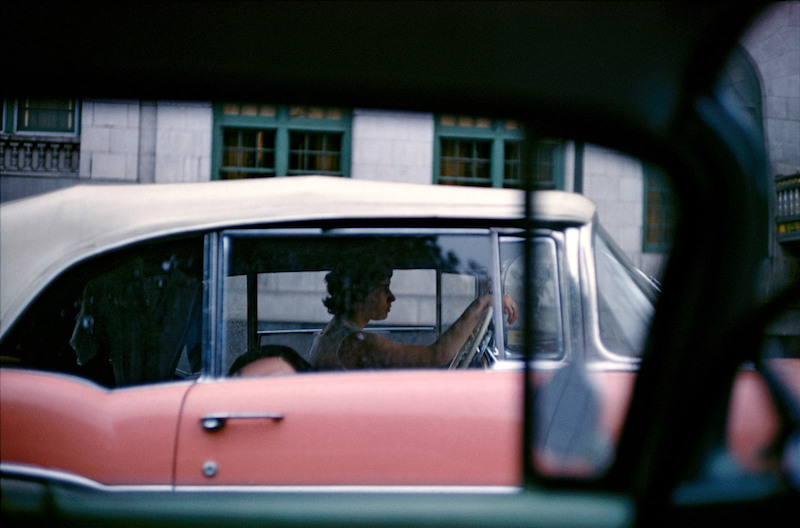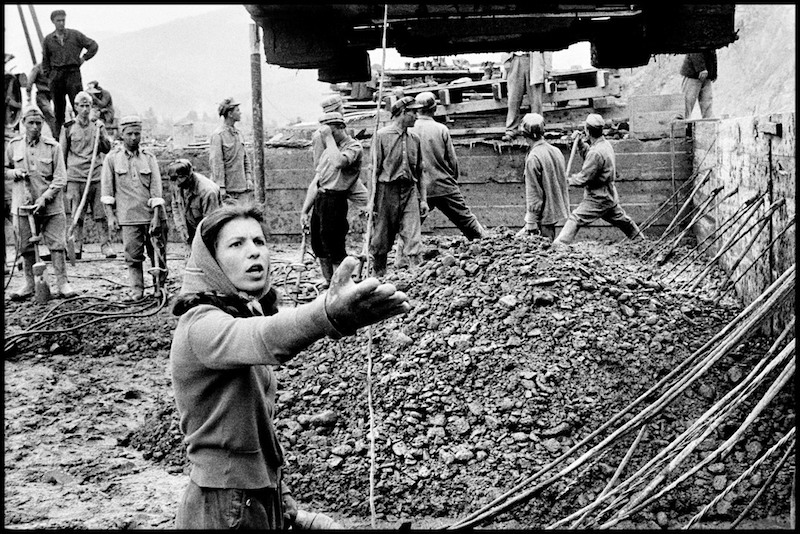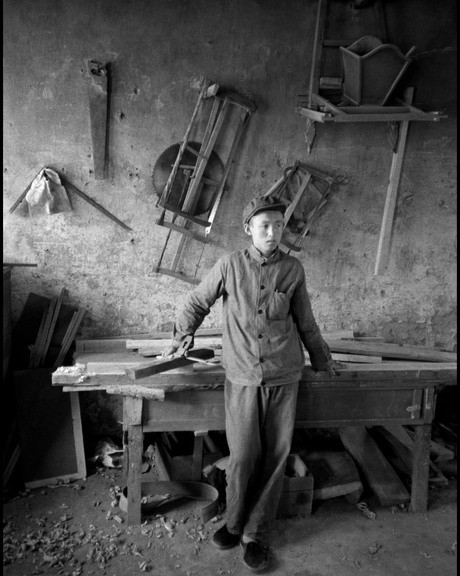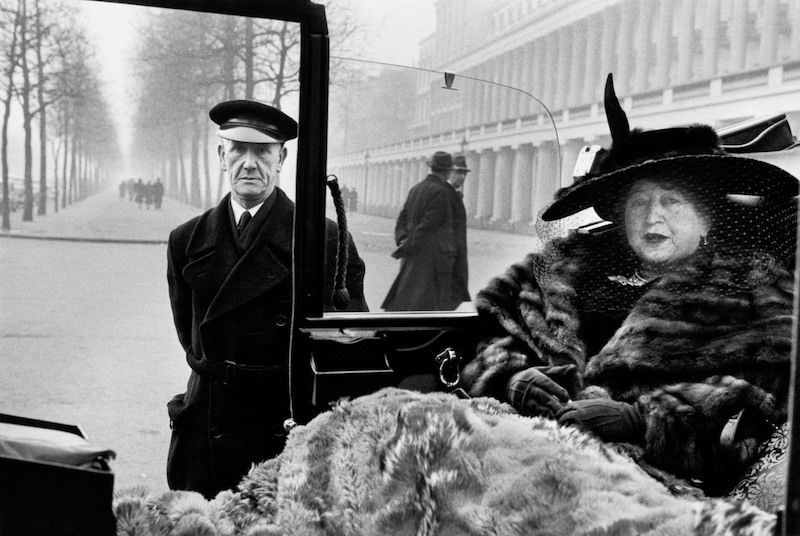The Misfits (1960)
[juicebox gallery_id=”40″]
Essay will play automatically, hover over image for additional options
Extracts from an interview with Inge Morath by Gail Levin
The coverage of The Misfits was a very special thing. The producer had a unique idea of creating a document about the shooting of this movie, for which he hired Magnum photographers. We were paired up and I was going to photograph with Henri Cartier-Bresson. We planned to go across the country. I didn’t know much about America at all, so we rented a car and went a very complicated route; Blue Ridge Mountains and Mississippi and we saw all the literary sights.
Anyway we arrived in Reno, which is so American and so western. It’s just marvelous to look at, and I was so intrigued because in the hotel room there was a machine and you could make your own coffee in the morning. I’d never seen such a thing. This was exotic. And naturally, being such an American movie, it was also exotic to us. So we approached it from our very European point of view, which was fun. We started early, often waited for very long times, and finished quite late; and it got hotter and hotter. Henri and I had worked together before, so we were never in each other’s way. Because two photographers on one movie could be really falling over each other. But we had very different territories and interests, at least in the approach to something.
Everybody has a certain distance at which he or she is most comfortable. There is a certain way of seeing the same thing in a different composition, or from a very different angle. I’m one who always wanders around a lot, always looking. And so does Henri, but boy is he fast. Wow. John Huston I’d worked with before. He was terrific to me. My very first movie job was with him in Moulin Rouge and I worked with him several times later. Monty Clift was also a great friend of mine whom I adored. Thelma Ritter was marvelous because she anchored this very American thing. And Eli Wallach. Eli is a funny guy and a wonderful actor. Eli and Marilyn were like buddies, and you can see it. Monty and Marilyn were kindred souls. And Clark Gable was Clark Gable. Marilyn Monroe was marvelous to look at; there was a shimmery, mother-of-pearl quality totally her own. Since she quite frequently arrived hours late to the set, co-stars and crew would go off into a hot semi-drowsiness, but madly jumped to their feet at the first sight of her car. Her arrival was invariably felt like an electric shock. It was a fantastic world; we photographers were glad to be outsiders.
Clark Gable told me all his adventures in the movies. Clark was wonderful. He said, “I will inscribe your jacket for you.” So he wrote on the back of my collar, “Clark Gable, Reno, Nevada, July 21st, 60.” And he said, “You’d better have somebody embroider this so it won’t wash out.” I had it made in Paris, embroidered on the back of the collar. I was kind of in awe of Arthur Miller. I’d seen Salesman and The Crucible and I thought, oh God, this man will be very sad all the time. The first time I met him, it was very hot and John Huston took Henri and me to a pool where they were all swimming. We didn’t go in the pool because we were busy photographing. Arthur was swimming a backstroke, and he told a very funny story, swimming all the time. It really was a short story which he wrote about a guy who was making shoulder pads. I never heard of anyone making shoulderpads; that in itself was exotic. But it was a very funny story, and very long, and when he finished the story and got out of the water, I had a whole new idea about Arthur Miller being a funny fellow. © Inge Morath, 2001.
Text constructed from Morath’s notes and from a conversation with Gail Levin for Making the Misfits, © Great Performances, Thirteen/WNET, 2001.


